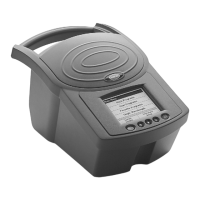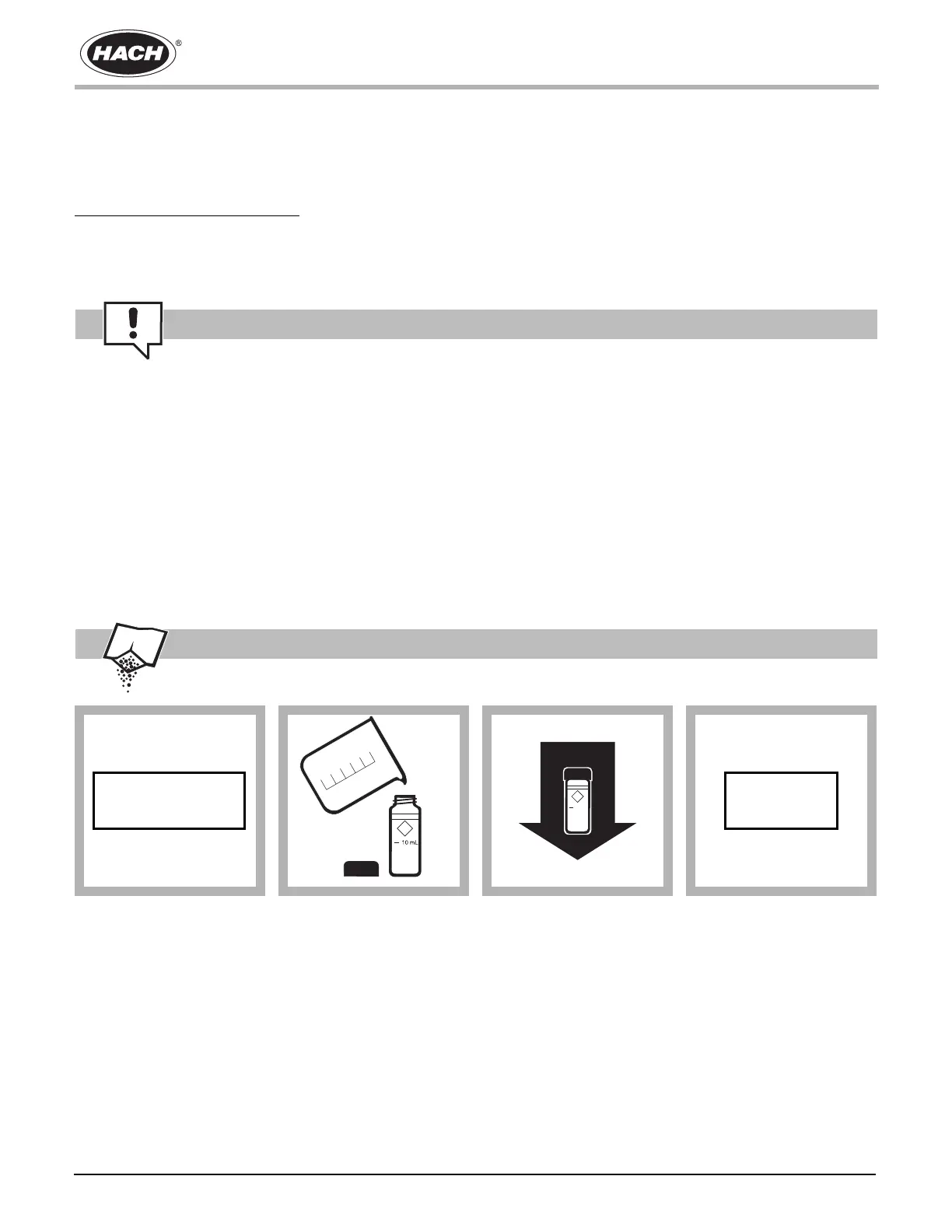DR/2400
Chlorine Dioxide
ChlorineDio_AVPP_Other_DPD_Eng_Ody.fm Page 1 of 6
• Analyze samples immediately because chlorine dioxide is unstable and volatile. See Sample Collection, Storage, and
Preservation.
• For more accurate results, determine a reagent blank value for each new lot of reagent. Follow the procedure using chlorine-free
deionized water in place of the sample. Subtract the reagent blank value from the final results or perform a reagent blank adjust
.
See the instrument manual for more information on Running a Reagent Blank.
• After adding the DPD Free Chlorine Powder Pillow to the sample, a pink color will develop if chlorine dioxide is present.
• Wipe the outside of sample cells before each insertion into the instrument cell holder. Use a damp towel followed by a dry one to
remove fingerprints or other marks.
• If the chlorine dioxide concentration in the sample exceeds the upper limit of the test, the color may fade or the sample may turn
yellow. Dilute the sample with high quality water that is chlorine demand-free, and repeat the test. Some loss of chlorine dioxide
may occur. Multiply the result by the appropriate dilution factor.
Chlorine Dioxide
(Method 10126
DPD Method*
Powder Pillows and AccuVac
®
Ampuls
(0.04 to 5.00 mg/L)
Scope and Application: For water and wastewater. USEPA accepted for reporting for drinking water
analysis.**
*Adapted from Standard Methods for the Examination of Water and Wastewater.
** Procedure is equivalent to Standard Methods, 18 ed., 4500 ClO
2
D.
1. Touch
Hach Programs.
Select program
76 Chlor Diox DPD.
Touch
Start.
2. Fill a round sample
cell with 10 mL of sample
and cap. (This is the
blank.)
Fill a second round cell
with 10 mL of sample and
cap. (This is the prepared
sample).
3. Wipe the blank and
place it into the cell
holder.
4. Touch Zero.
The display will show:
0.00 mg/L ClO
2
Tips and Techniques
Powder Pillows Method 10126
Hach Programs
10 mL
Zero

